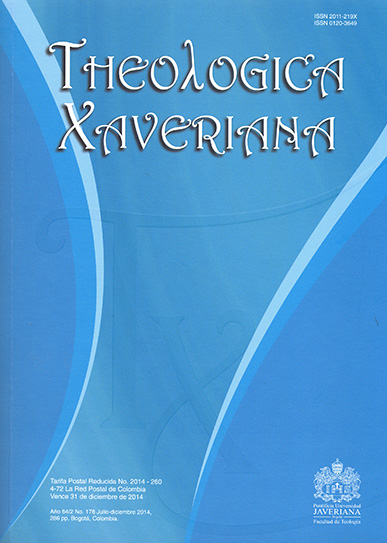Abstract
This article presents theological research findings concerning the identification of contextual motivations of Jn 4. The text is the starting point, analytically stated based on representative signs from tradition, while the conclusions are presented as comprehensive hypotheses. Among them, the encounter of Jesus and the Samaritan woman is highlighted as a “miracle” story, and as a metaphorical description of the transformation of Christianity, from being a marginal Jewish sect to become an autonomous and independent religion. The procedure is expressed but not the filigree of the abductions, a method of qualitative research to find new meanings, to establish interdisciplinary dialogues and favor the abolition of fanaticisms.
This journal is registered under a Creative Commons Attribution 4.0 International Public License. Thus, this work may be reproduced, distributed, and publicly shared in digital format, as long as the names of the authors and Pontificia Universidad Javeriana are acknowledged. Others are allowed to quote, adapt, transform, auto-archive, republish, and create based on this material, for any purpose (even commercial ones), provided the authorship is duly acknowledged, a link to the original work is provided, and it is specified if changes have been made. Pontificia Universidad Javeriana does not hold the rights of published works and the authors are solely responsible for the contents of their works; they keep the moral, intellectual, privacy, and publicity rights.
Approving the intervention of the work (review, copy-editing, translation, layout) and the following outreach, are granted through an use license and not through an assignment of rights. This means the journal and Pontificia Universidad Javeriana cannot be held responsible for any ethical malpractice by the authors. As a consequence of the protection granted by the use license, the journal is not required to publish recantations or modify information already published, unless the errata stems from the editorial management process. Publishing contents in this journal does not generate royalties for contributors.


